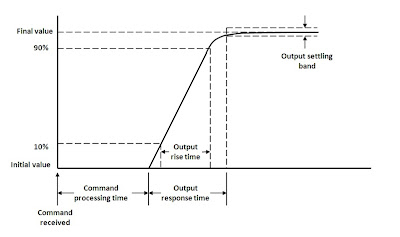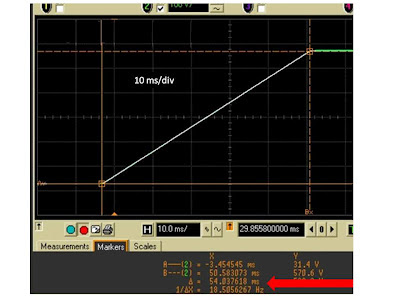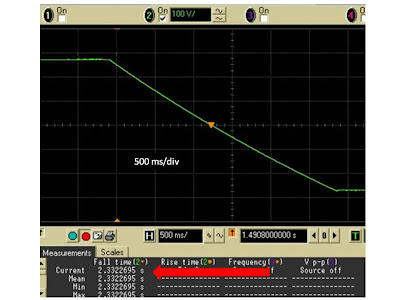When it comes to manufacturing of electronic products,
reducing test time to improve throughput is virtually always a top priority,
because “time is money” as the old saying goes! Usually most all of the
attention may be placed on reducing the test time of the banner aspects of the
product, such as the RF performance of a wireless device, for example. However,
the choice of the DC system power supply can also have a huge impact on your
test time and throughput during manufacturing. You may find the lowest cost,
more basic-performance DC power supply that meets your immediate needs end up
costing you the difference in price many, many times over of that of a
higher-performance DC power supply having better throughput performance in the
long run!
The DC power supply can incorporate a number of advanced
features, such as elaborate triggering and sequencing systems, which will allow
you restructure your testing to optimize throughput. However, even fundamental throughput-related
features of the power supply can also have a large impact on your test time,
including:
- Command processing time
- Output up-programming time
- Output down-programming time
- Measurement time
Figure 1 illustrates what the command processing and
up-programming times are for a DC power supply. The command processing time is
the time from when the command is first received to the point where the power
supply starts acting on it. In this case it is when power supply’s output
starts to change. The up-programming response time is the time the power supply
takes for the output to rise and settle within a small band around the final
output level, after processing the command instructing it to change its output
level.
Figure 1: Power supply command processing and
up-programming response times
The down-programming response time is like the up-programming
response time except that the power supply is instead being programmed to a lower
level. However, you need to look at down-programming independently as short
up-programming time does not necessarily guarantee comparably short down-programming
time. More basic performance DC power supplies usually lack an active
down-programmer circuit that quickly brings down the output. In this case the
down-programming response time can be very dependent on how much load the DUT
presents to the power supply’s output.
How much difference is there in performance between more
basic performance and higher performance DC power supplies on these
throughput-related features? It can be considerable; over several orders of
magnitude difference. As one example, command processing time can range from up
to 100’s of milliseconds for entry-level power supplies to under 1 millisecond
for high performance power supplies.
Another fundamental throughput-related feature
of a DC power supply is its measurement time. There are a couple of aspects to
consider here as well, which I will elaborate on in part 2 of this series on how
fundamental features of power supplies impact your test throughput, in an
upcoming posting here on “Watt’s Up?” along with tying it all together to show
how they affect actual test throughput!


